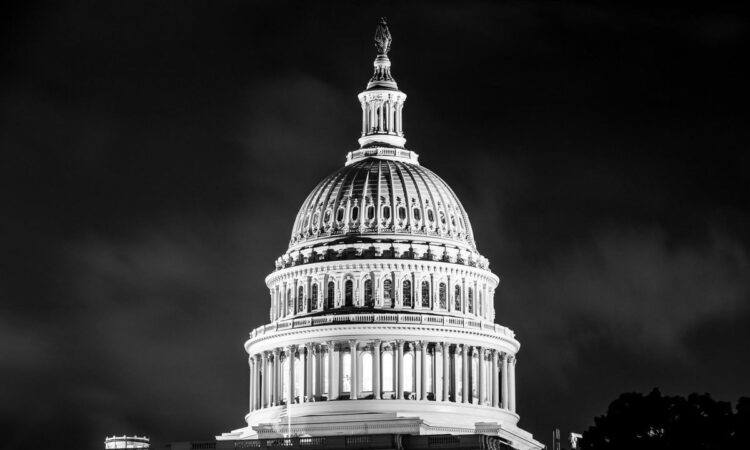
The third week of the federal government shutdown is approaching, bringing the economic ripple effects closer to the commercial real estate sector with each passing day.
Federal workers are set to miss their first paycheck this week, resulting in billions of dollars being sapped from the economy. Those who operate and develop affordable housing already depend on federal aid to stay afloat, but with less spending amid declining consumer confidence, the longer the government goes without operating “nonessential” services or with reduced staff, the more parts of the industry will be exposed.

The longest shutdown happened in 2018 and lasted 35 days.
“Every day that the shutdown continues is additional months or years that you have to address that question of, ‘Can we truly rely on the federal government as a partner?’” said Rebecca Simon, a partner at real estate law firm Nixon Peabody who specializes in affordable housing. “Of course, for a good majority of the affordable housing in this country, that answer needs to be yes. And shutdowns, unfortunately, work against that.”
The federal government shut down on Oct. 1 after the Senate failed to pass a plan to fund the government. The two parties fell into a stalemate after Democrats refused to back a Republican plan that reduced spending on healthcare programs.
Over the last two weeks, Congress has voted unsuccessfully to reopen the government seven times, leaving about 550,000 to 750,000 federal workers across dozens of agencies barred from reporting to work and others ordered to continue without pay.
Each week of the government shutdown is expected to cost the nation’s economy about $7B, according to a report written by EY-Parthenon Chief Economist Gregory Daco.
U.S. gross domestic product could decline 15 to 20 basis points each week the shutdown lingers, according to Marcus & Millichap. The brokerage firm estimated that for the commercial real estate industry, the shutdown will have limited effects. Until it doesn’t.
Most tenants and commercial property operators and owners are able to fulfill daily operations without the federal government. Financing is also still available, so transactions, even ones using Freddie Mac and Fannie Mae, can close.
While everyday operations of most corners of the industry are fairly untouched, that isn’t the case for landlords that rely on the Department of Housing and Urban Development, which provides vouchers, public housing and multifamily assistance programs.
The department has enough funding to fulfill its payment obligations, such as housing vouchers and public housing subsidies, until mid-November, according to a shutdown notice posted in late September. But it is only operating with 26% of its staffing capacity, according to a client warning released by Nixon Peabody.
“There is less certainty that there will be enough funds to continue funding those contracts, and that will mean that the government will not be paying its portion of the rent obligation to the owners, and that will cause the owners to then, in turn, have trouble paying their bills,” Simon said.
HUD employees are solely focusing on emergencies where a loss of housing is a possibility, she said.
Simon, who was furloughed during the last shutdown in 2019 when she worked as a trial attorney in HUD’s litigation and general counsel offices, said the shutdown is just another layer to the understaffing of the agency, which faced a 23% cut in its workforce before the shutdown. The timing on deals it finances has been heavily affected, she said.
“I would say we are much closer to full halt than we are to a slow pause,” Simon said.
When asked for comment on HUD staffing and funding levels during the shutdown, HUD Press Secretary Jacklyn Ward directed Bisnow to an op-ed by HUD Secretary Scott Turner published Tuesday in The Daily Caller.
“Four million American families depend on the services provided by the U.S. Department of Housing and Urban Development to keep a roof over their heads,” Turner wrote. “With each day the left continues its government shutdown, HUD is prevented from providing a full range of services to the American public.”

Former Texas lawmaker Scott Turner was confirmed as HUD secretary in February.
The government shutdown is also immediately hitting the National Flood Insurance Program, which has held off on issuing new policies necessary for homebuyers to secure their mortgages, The New York Times reported. It is expected to disrupt nearly 1,400 transactions per day, according to a report by the National Association of Realtors.
The longest shutdown in history was during the first Trump administration, when the government was frozen for 35 days between late 2018 and January 2019. About 380,000 employees were furloughed, costing the U.S. economy about $11B — roughly $8B of which was recaptured, according to Marcus & Millichap.
The U.S. implemented the Government Employee Fair Treatment Act in 2019, which requires back pay for federal employees furloughed or required to work through a shutdown without a paycheck.
But the administration this time around is operating under a different economic environment.
Not only is the White House threatening to withhold back pay despite the law, but the Federal Reserve’s benchmark interest rate was half of what it is today. Inflation is ticking up amid stricter tariffs, and the job market has slowed.
Today’s shutdown has more parallels with the 2013 shutdown, which lasted 16 days in the final quarter of the year. About 850,000 employees were furloughed, with an estimated loss of $20B to the GDP, according to Marcus & Millichap.
Unemployment, often an indicator of how well the economy is faring, is rising, up to 4.3% in August, according to the Bureau of Labor Statistics. BLS didn’t release its September jobs report due to the shutdown, and the reduced staffing levels may reduce its accuracy, CoStar Chief Economist and Managing Director Christine Cooper told Bisnow in a phone interview.
It could also lead to the Federal Reserve making uneducated decisions about the market.
“The longer it lasts and the less data you have, the central bank is facing risks,” The Conference Board Senior Economist Yelena Shulyatyeva said. “They can conduct policy based on just partial data, and that … raises the probability of doing something wrong and the consequences could be quite significant.”
Consumer confidence has declined for nine consecutive months, according to a Conference Board report.
Areas with dense federal workforces, like Washington, D.C., are likely to feel an immediate impact in the hospitality and retail sectors, Cooper said. Food banks in the area are already reporting increased demand, The Washington Post reported.
But the economy can bounce back fairly quickly if the shutdown is resolved within the month.
Consequences start to become less manageable around the six-to-eight-week mark, Shulyatyeva said — which would be the longest shutdown in history if it got to that point.
“The uncertainty that’s in the economy right now, in terms of business decisions, household decisions — not only because of the shutdown but because of … policy decisions that have been made this year — have just generated a veneer of uncertainty … causing some activity to just pause and wait,” Cooper said.
“The longer we have that, the longer this keeps holding people back, I think the longer it will weigh on the economy.”




